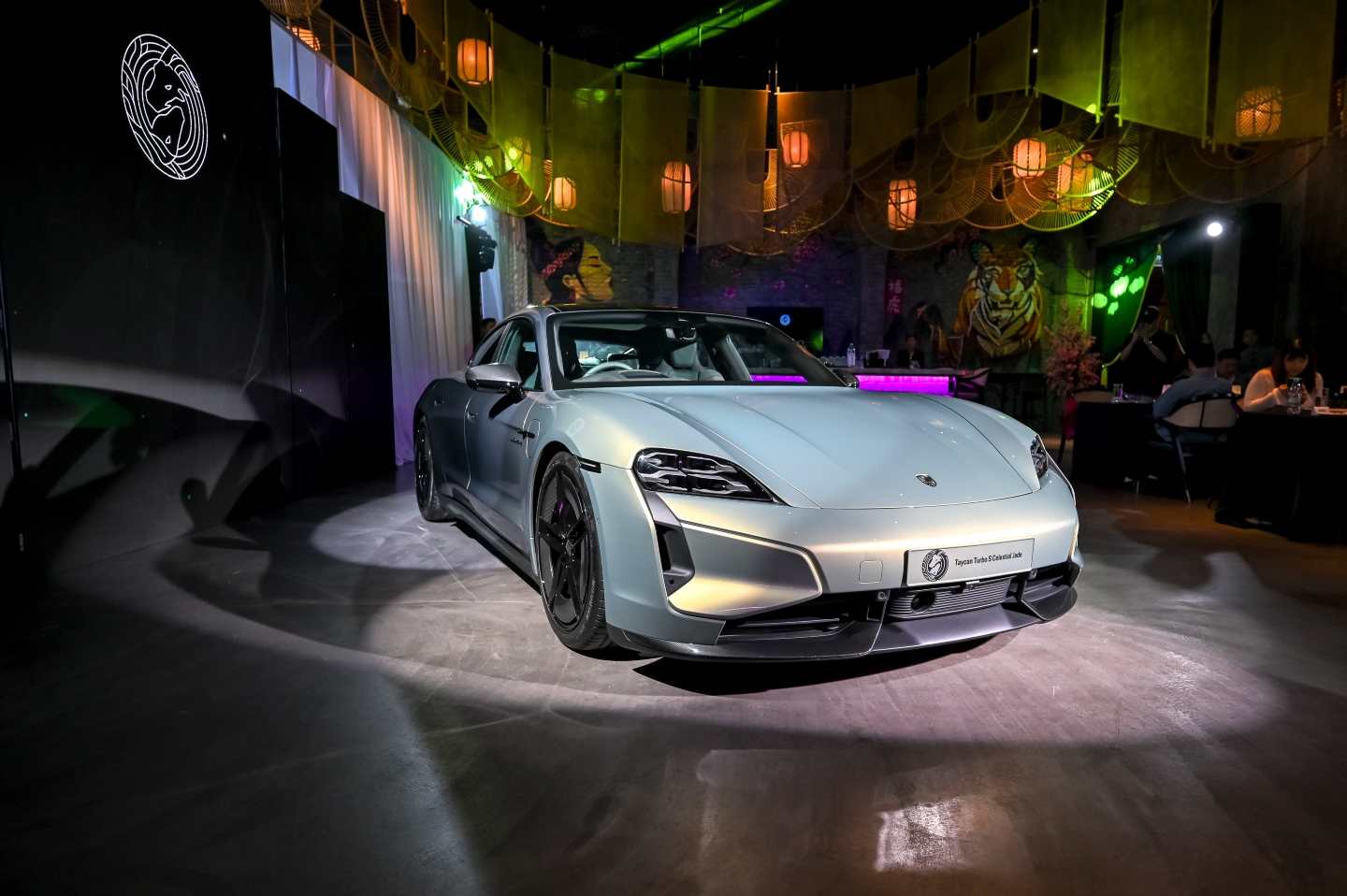
The one-of-a-kind Taycan Turbo S Celestial Jade made its Malaysian debut at Fuhu, Genting Highlands (All photos: Porsche)
What’s in a name? While Shakespeare may argue that a thing or a person’s true nature is independent of its moniker, there is no denying that nomenclature plays a big role in shaping one’s perception of identity and values.
When Porsche decided to make its grand foray into the electric vehicle (EV) space in 2019, its spearhead warranted a noteworthy name. They called it Taycan — pronounced “tie-kahn” — which is derived from two words of Turkish origin, roughly translating into “soul of a spirited young horse”. The term was not only a reflection of the vehicle’s dynamic and vibrant character, but also foreshadowed the personality of the electrified Porsches to come.
The Taycan was imagined as an EV from the ground up, unlike most, which were based on cars originally designed with internal combustion engines. This enabled the German marque to construct a machine tailored for the age of electromobility, resulting in the first production vehicle with a system architecture of 800 volts at the time. Combining stunning power, sporty design and class-leading technology, it was a game changer in many ways, chalking up high scores in the departments that matter most, such as performance, battery capacity, range and, of course, looks.
Nevertheless, Porsche is not one to rest on its laurels. The brand recently rolled out a huge update for its electric flagship, which includes a suite of upgrades across the board that endow the Taycan 2.0 with increased performance, speed, efficiency and range. The design, however, did not deviate much from its original, save for the reshaped front air intakes and Porsche logo in the rear light strip, which takes on a 3D, glass-look design that can be illuminated as an option. It is a classic “if it ain’t broke, don’t fix it” move, and we are glad the designers chose not to tamper with the beau idéal.
20241017_021954794_ios.jpg
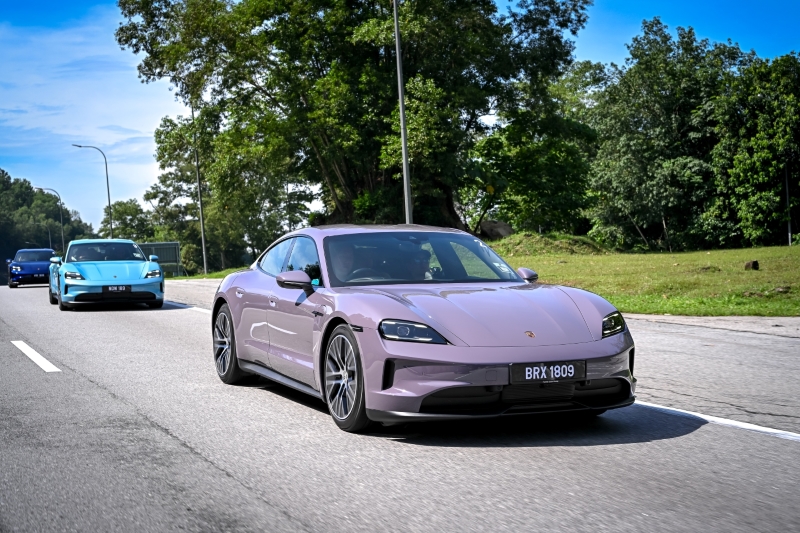
In terms of numbers, the Taycan’s new electric motor generates 80kW more power than its predecessor while weighing 10.4kg lighter, hence the quicker acceleration on the latest models. The Taycan RWD is able to produce 320kW (408PS, PferdStarke or horsepower) on overboost and sprint from zero to 100kph in 4.8 seconds — 0.6 seconds quicker than its forerunner. The Taycan Turbo S takes half that time, thanks to its 700kW (952PS) of brawn. But if for some reason you need it to be more instantaneous, the Taycan Turbo GT will catapult you to the hundreds in just 2.2 seconds with its vicious 760kW (1,034PS) boost.
As for the cherry on top, Taycan models equipped with the Sport Chrono package and Performance Battery Plus come with a special push-to-pass button on the mode switch that gives a boost of up to 95PS for 10 seconds.
Nevertheless, quick acceleration loses its lustre if the car lacks agility, grip or precise steering, a reminder that pops up when the sign to exit the Kuala Lumpur-Karak Expressway to Genting Highlands approaches. Thankfully, the Taycan has all three in spades, performing lightning-quick overtakes and tackling bends with ease. Exceptional handling is key to drivers connecting with the road, so its effortless ability to navigate tricky terrain and steep slopes instilled great confidence.
The vehicle’s chassis has been completely overhauled with adaptive air suspension, based on a two-chamber air spring with two-valve damper technology, as standard. Achieving this balance ensures a dynamic yet comfortable experience for all occupants in its low-slung profile.
20241016_105747053_ios.jpg
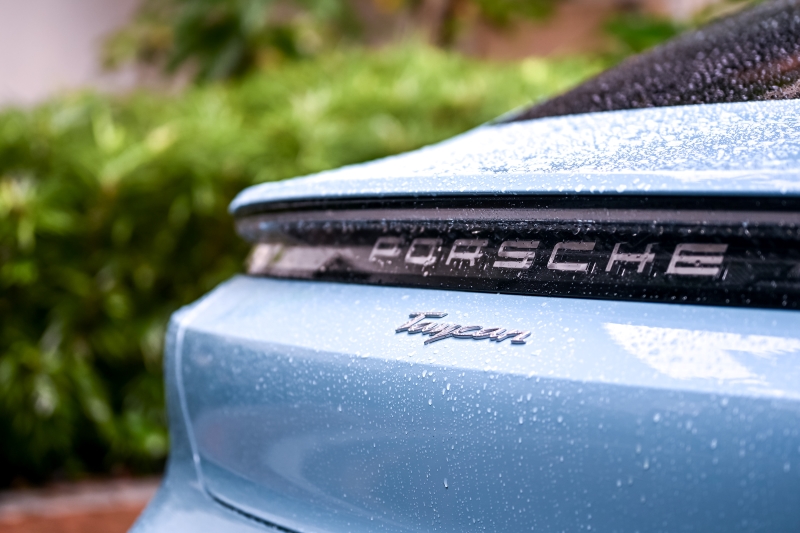
Improved charging and range are also the updated Taycan’s trump cards. The upgraded high-voltage battery incorporates new cell chemistry that makes the battery packs more energy-dense, thus enabling the car to charge faster. It only takes 18 minutes to replenish the vehicle from 10% to 80% at a 350kW DC fast charger or 33 minutes on a 150kW station. The maximum recuperation power during deceleration from high speeds has also been bumped up from 290kW to 400kW, allowing the Taycan to recover more energy than ever.
The standard battery (89kWh gross energy content) on the Taycan RWD is capable of a WLTP (Worldwide Harmonised Light Vehicle Test Procedure) range of 566km whereas the larger battery pack (105kWh) goes up to 678km. In short, the Taycan can now travel to the furthest points of Peninsular Malaysia from KL with nary a worry for the driver.
Here is the good news for road trippers: Those bound for the east coast can soon take advantage of the Shell Recharge High-Performance Charging (HPC) station in partnership with Porsche at the Temerloh R&R. These ultra-fast 180kW chargers are part of the companies’ plan to expand the country’s EV infrastructure. As our convoy arrived at Genting Highlands for a lunch stopover, the Taycans were led to the Shell Recharge 360kW HPC hub at Resorts World Genting to juice up.
Back in September, the one-off Taycan Turbo S Celestial Jade made its world premiere in Singapore and is now touring the region. The Malaysian premiere took place at Fuhu, Zouk Group’s contemporary Chinese restaurant within Genting’s integrated destination. Created through the legendary Porsche Sonderwunsch — or special request — programme, the bespoke vehicle epitomises the near-limitless personalisation possibilities available to customers. If you can dream it, they can certainly build it.
20241016_105758840_ios.jpg
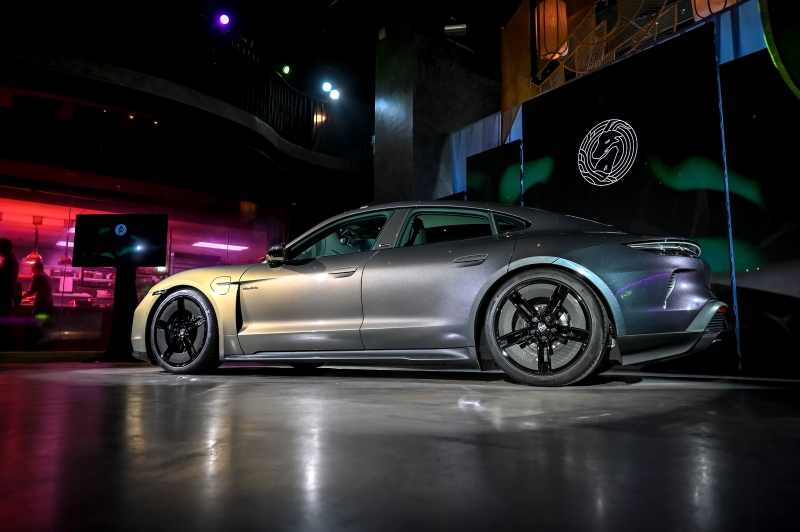
For this special Taycan, the designers and paint experts at Porsche Exclusive Manufaktur sought to emulate the vibrancy of Southeast Asia, paying tribute to the region with unique Chromaflair colour combinations and mythical symbols.
The dynamic Chromaflair pigments contain extremely thin flakes that appear to shift in colour depending on the angle and light. The flakes consist of an opaque, reflective core layer of aluminium, which is then surrounded by a glass-like material. This outer transparent layer refracts light and colour differently depending on the thickness. To put things into perspective, the flakes are measured in microns and 50 times thinner than human hair.
Applying the stardust on your dream car will set you back around €100,000 (about RM475,000), we hear. That said, the Taycan Turbo S Celestial Jade combines two Chromaflair paints for the first time ever. The front of the car is coated in Urban Bamboo, a bright green with yellow and gold tones, which blends into Shifting Carbon, a dark grey with black and blue flecks. The former symbolises precious jade, known as the “Stone of Heaven”, which embodies nobility, wisdom, wealth and longevity. Carbon, by contrast, is a robust and durable material that represents the pioneering spirit of Porsche in the world of motor racing. The paintwork was done exclusively by hand and took no less than 80 hours.
celestial_jade_photo_5.jpg
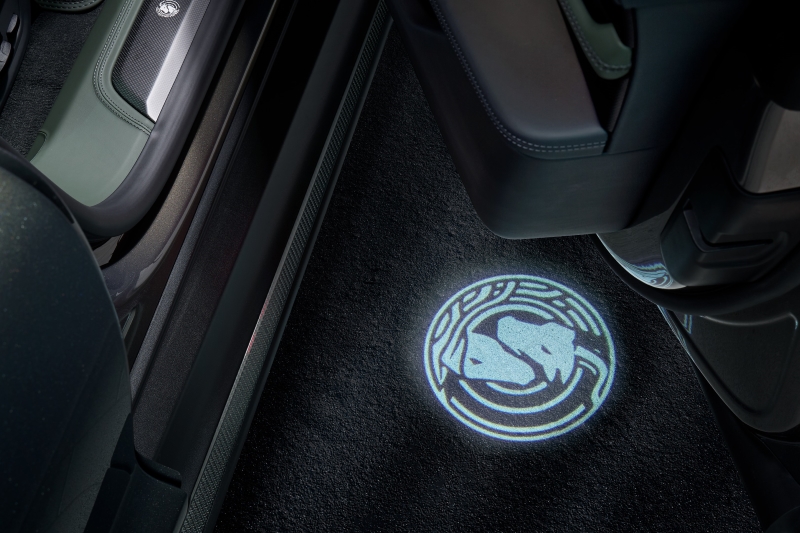
What’s in a name? A myriad of cultures around the world would attest to its significance in shaping one’s outlook on life. Drawing inspiration from the long ma, a fabled winged horse with dragon scales in Chinese mythology, Porsche has created a motif that combines the two beings to represent this year’s Chinese zodiac and the “young horse” in which the Taycan’s name alludes to. The LongMa logo can be seen on the sill guards of the front and rear doors, on the door projector as well as headrests.
In addition to the 10 leather and 15 seam colours offered as standard for the Taycan, Leather to Sample — comprising around 150 hues — is now also available for the series via the Sonderwunsch programme. Inside the Celestial Jade, the interior specialists combined the standard Slate Grey colour with English Green, a Leather to Sample option. The latter is applied on the doors, centre console and front and rear seats.
The Taycan takes both electromobility and personalisation to new heights. While only one lucky (and very deep-pocketed) bidder may drive off with the Taycan Turbo S Celestial Jade when it goes on auction in 2025, those who desire a custom-built Porsche to showcase their individuality can do so with the Sonderwunsch programme.
This article first appeared on Nov 11, 2024 in The Edge Malaysia.


